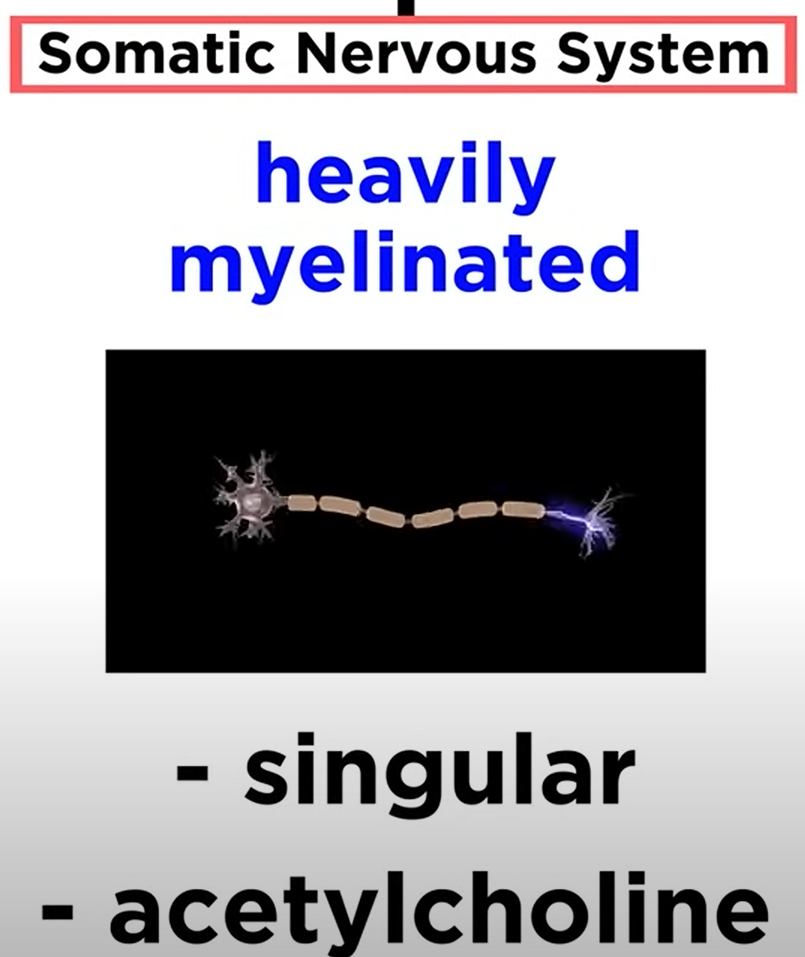Autonomic Nervous System
1/24
Earn XP
Description and Tags
Anat & Phys 337
Name | Mastery | Learn | Test | Matching | Spaced |
|---|
No study sessions yet.
25 Terms
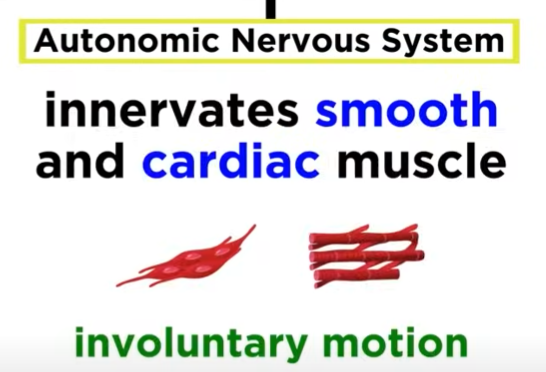
What muscles and type of motion does the autonomic nervous system innervate?
Smooth muscle, cardiac muscle, glands
Involuntary motion— stimulatory or inhibitory effect
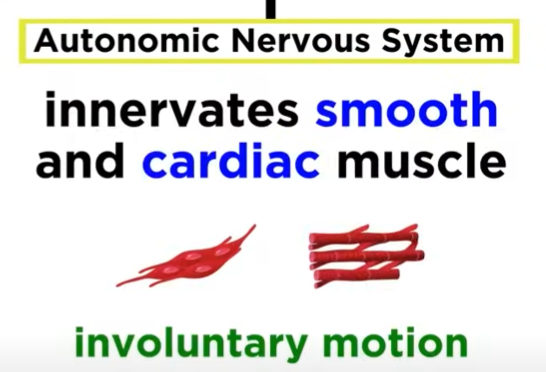
Sympathetic nervous system is known as
Fight or flight
Raises heart rate
Blood vessels constrict
Glucose released
Parasympathetic nervous system is known as
Rest and digest:
Digestion of food
Expulsion of waste
General maintenance
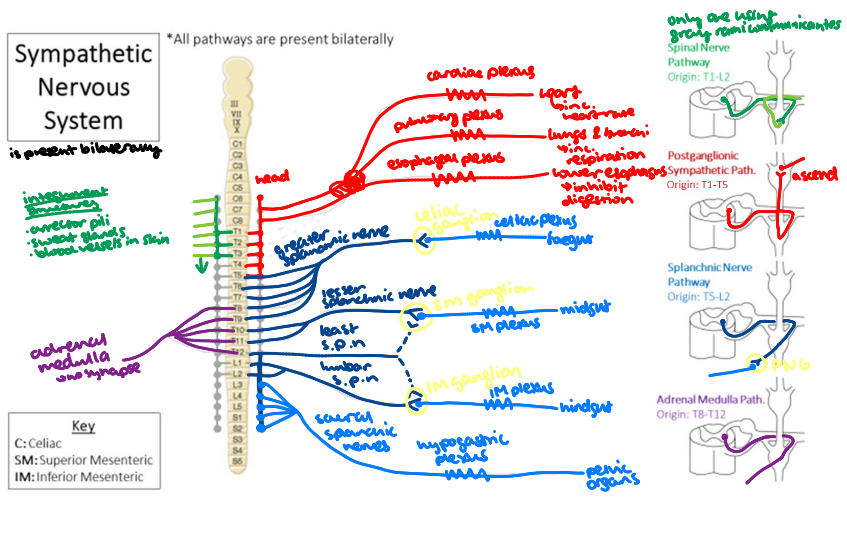
You feel your heart racing and pounding, and you realize you’re sweating. What ANS division has been activated and what plexus/pathways?
Heart rate = ?
Sweating = ?
Heart rate = Cardiac plexus
Sweating = Spinal nerve
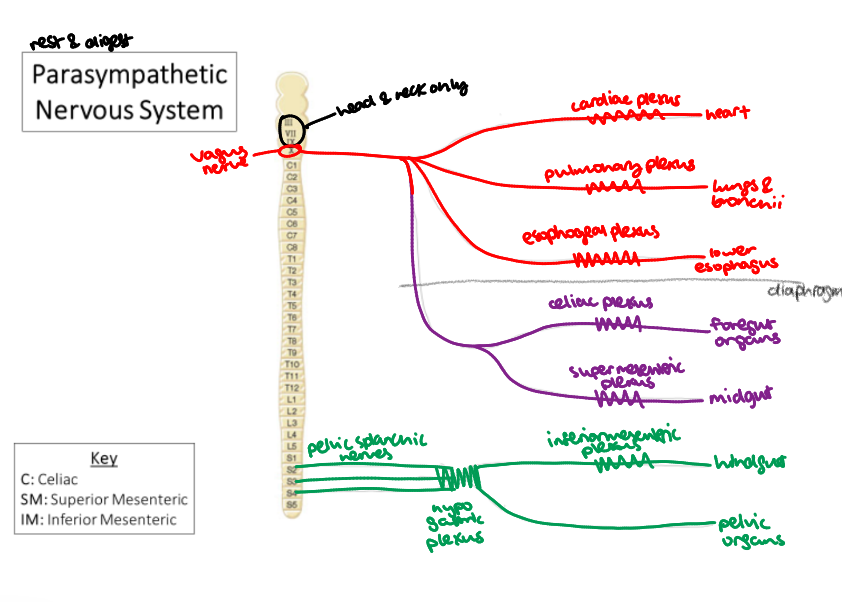
You feel your heart rate and respiratory rate decreasing. After 10 minutes, your stomach is churning, and you realize you need a snack. What ANS division and which plexus/pathways?
Respiratory rate = ?
Stomach churning = ?
Respiratory rate = Pulmonary plexus
Stomach churning = Celiac plexus
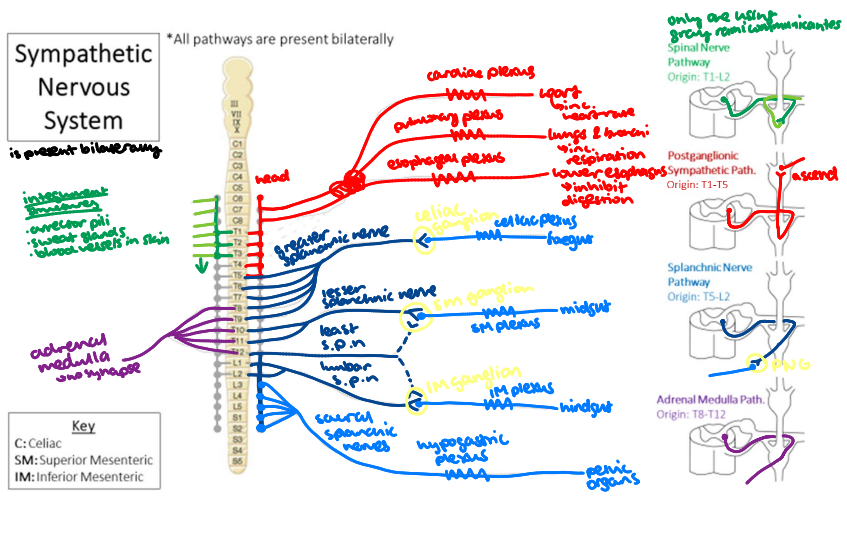
A 38 year old patient has undergone thyroidectomy surgery. She is very physically active, and she has noticed an odd array of symptoms in the weeks after her surgery, especially with exercise. Upon further examination, it is found that her sympathetic chain has been severed at the T1 level on the left side. What symptoms might you expect this patient to present with and why?
Integument functions would be impacted
Left side of face doesn’t sweat or flush
Diminished cardiac/pulmonary response
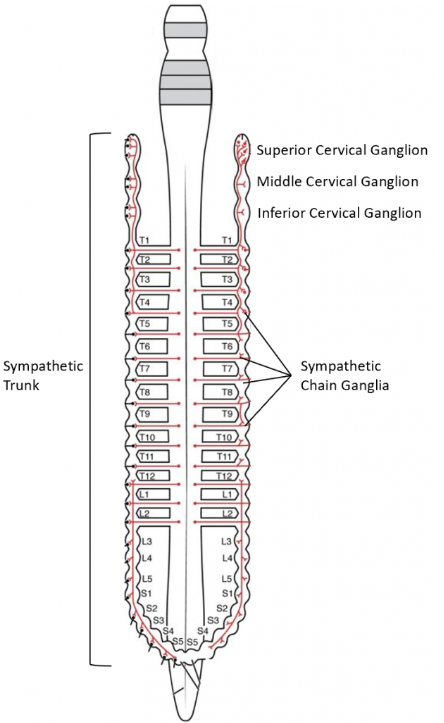
Where do sympathetic division fibers originate from?
The thoracic and lumbar regions of the spinal cord
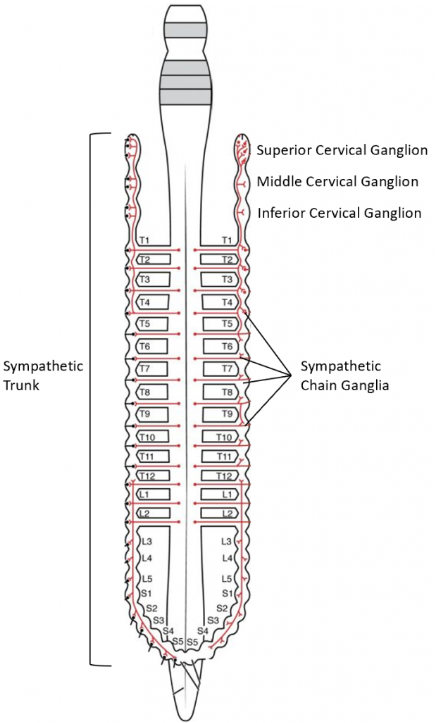
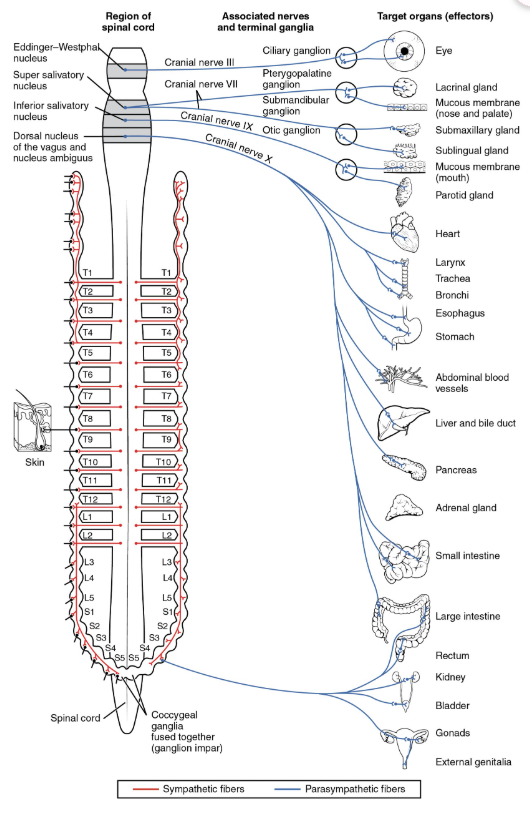
Where do parasympathetic division fibers originate from?
The fibers originate in the brain and sacral region of the spinal cord
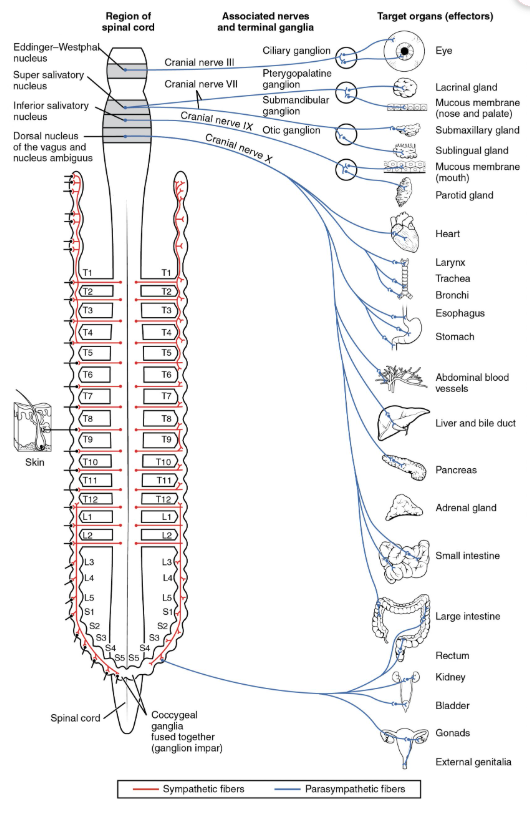
What are the lengths and location of the SD fibers?
Short preganglionic fibers
Long postganglionic fibers
Ganglia sit near spinal cord
What are the lengths and location of the PSD fibers?
Long preganglionic fibers
Short postganglionic fibers
Ganglia is in effector organs
Axons of the ANS are _____ and release the hormones ______
Lightly myelinated or nonmyelinated
Two neuron chain
Release acetylcholine or norepinephrine
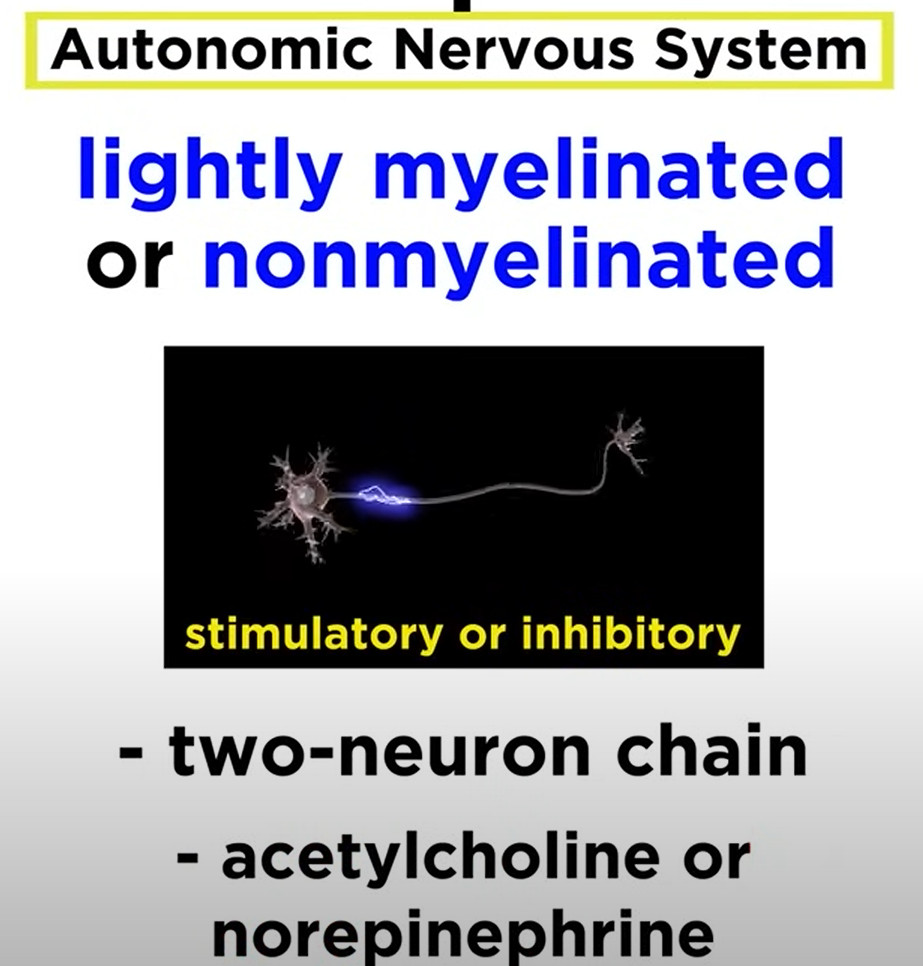
What is dual innervation?
Target effectors receive innervation from both parasympathetic and sympathetic divisions
Whichever is most active at a given time will determine the activity of the effector at that time
How does referred pain occur?
Ex. strong visceral sensations of the heart will be felt as pain in the left shoulder and left arm
Visceral sensory fibers enter at the same level of the spinal cord as the somatosensory fibers of the referred pain location
The brain misinterprets the sensations from the heart region as being from the shoulder and arm regions
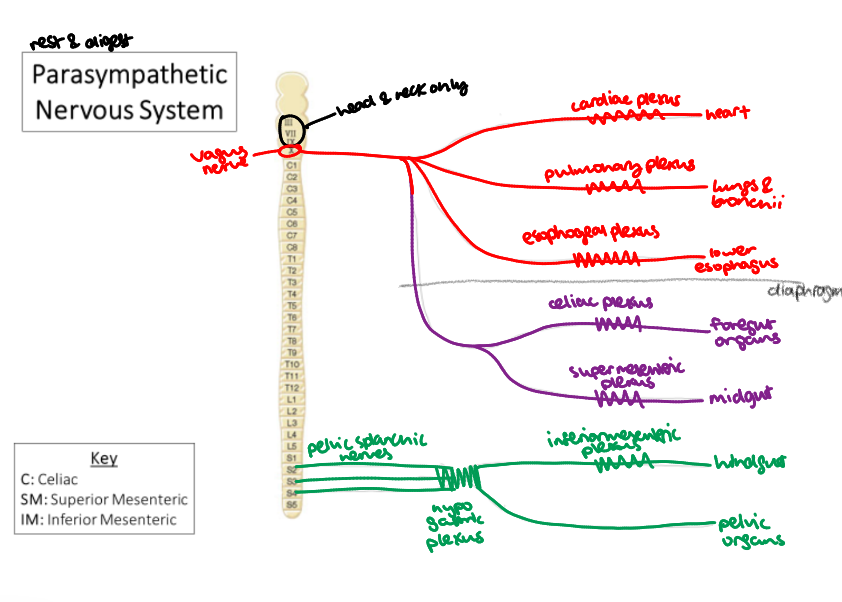
What is the function of the vagus nerve?
Provides parasympathetic innervation to the thoracic organs, most of the abdominal organs
Fibers branch along its path to join several different plexuses that travel to specific organs
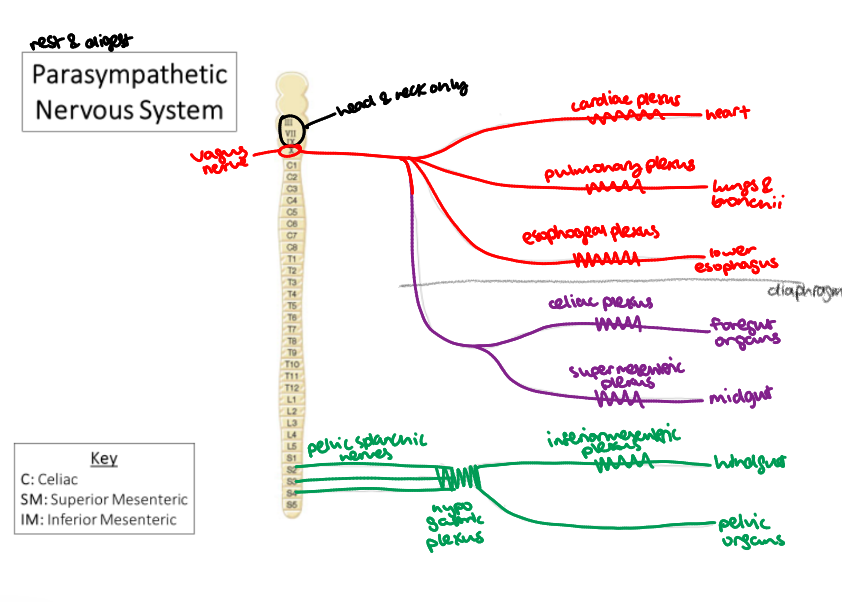
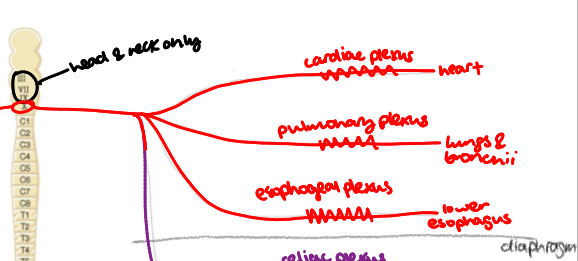
What are the plexuses of the thorax in the PSD and where they travel to?
Fibers in the esophageal plexus travel to portions of the esophagus
Fibers in the cardiac plexus travel to the heart
Fibers in the pulmonary plexus travel to the lungs and bronchi
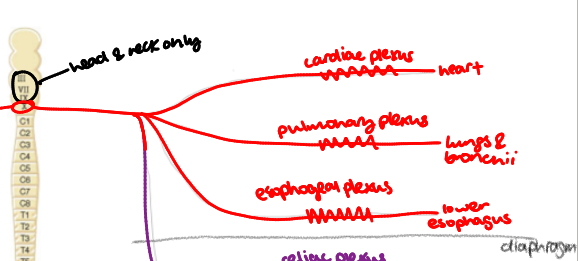
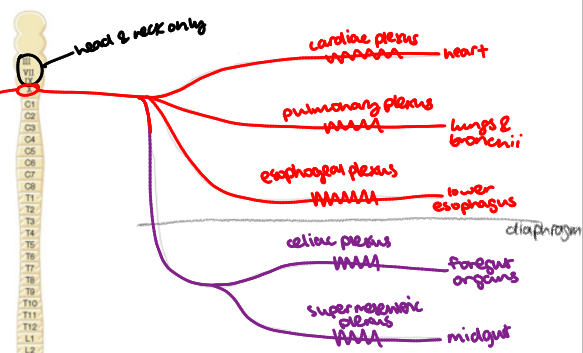
What are the plexuses of the abdomen in the PSD and where they travel to?
Fibers in the celiac plexus travel to organs of the foregut (alimentary tract organs from the very inferior esophagus through the first two parts of the duodenum, also the liver, pancreas, and gallbladder)
Fibers in the superior mesenteric plexus travel to the midgut organs (third part of the duodenum through the first two thirds of the transverse colon)
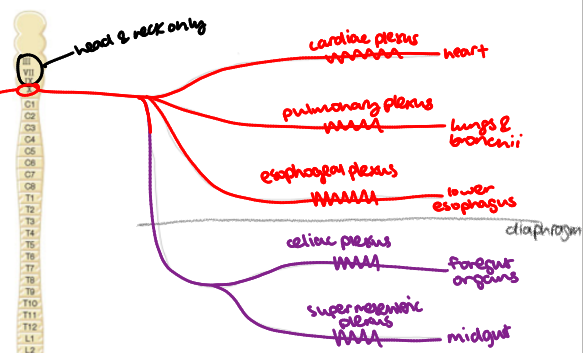

What are the plexuses of the pelvic splanchnic nerves (S2-S4) in the PSD and where do they travel to?
Fibers in the inferior mesenteric plexus travel to the hindgut organs (last two thirds of the transverse colon to the rectum)
Fibers in the hypogastric plexus travel to pelvic organs, including the bladder and reproductive organs.

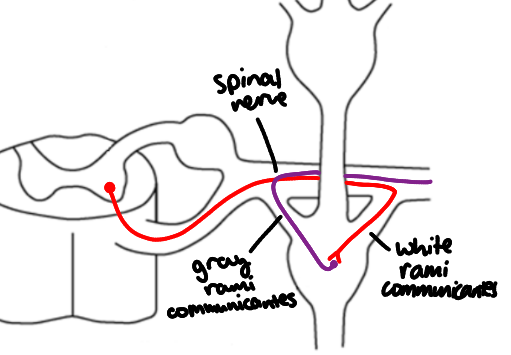
Explain the spinal nerve pathway of the SD.
This pathway uses the spinal nerve and its branches to get out to its targets in the skin.
It innervates the arrector pili muscles, allowing our hair to “stand up,” our sweat glands to increase sweating for heat dissipation, and the blood vessels in our skin, causing vasodilation to cool blood at the surface of the body (heat dissipation).
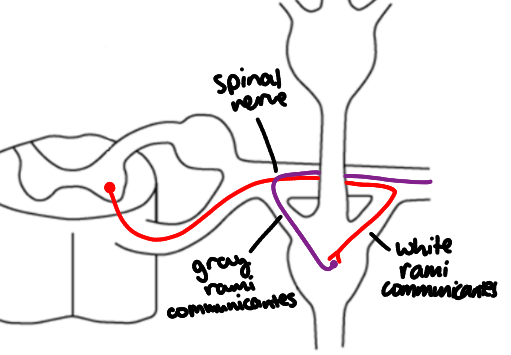
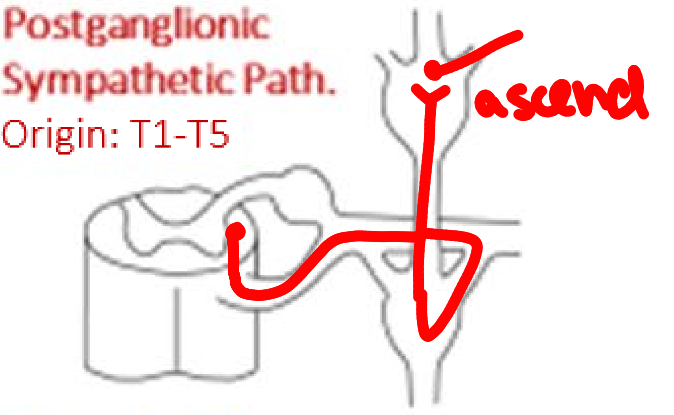
Explain the Postganglionic sympathetic pathway of the SD.
After entering the sympathetic chain from thoracic levels T1-T5, these fibers ascend to the middle and inferior cervical ganglia
They synapse
From there they simply exit the sympathetic chain and travel to the following plexuses
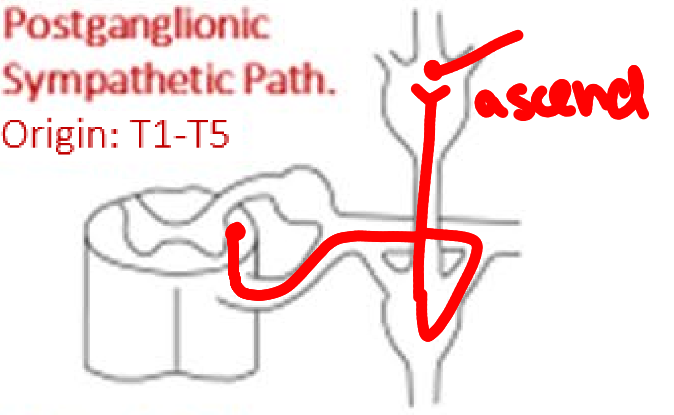
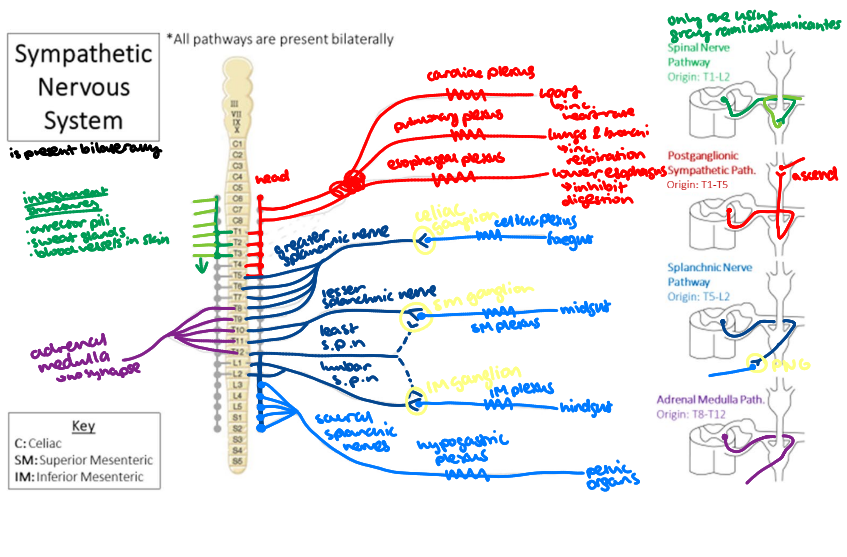
What are the plexuses of the Postganglionic sympathetic pathway of the SD and where do they travel to?
Fibers in the esophageal plexus travel to portions of the esophagus
Fibers in the cardiac plexus travel to the heart
Fibers in the pulmonary plexus travel to the lungs and bronchi
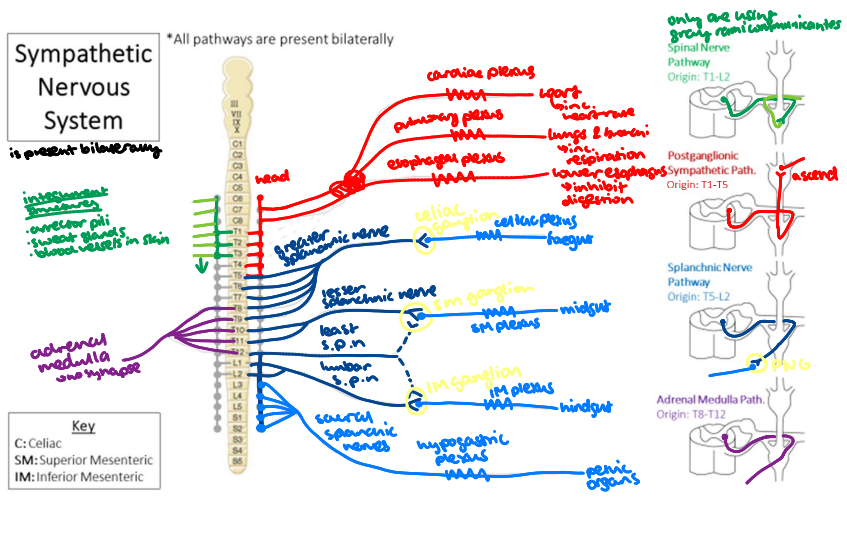
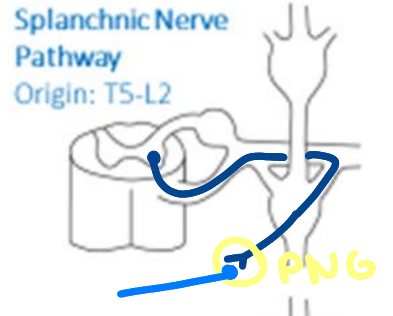
Explain the Splanchnic nerve pathway of the SD.
Fibers in this pathway originate from the T5-L2 levels.
They leave the sympathetic chain in splanchnic nerves that travel to prevertebral ganglia
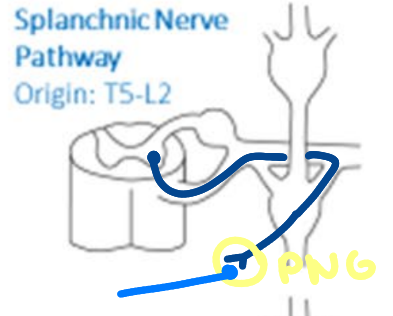
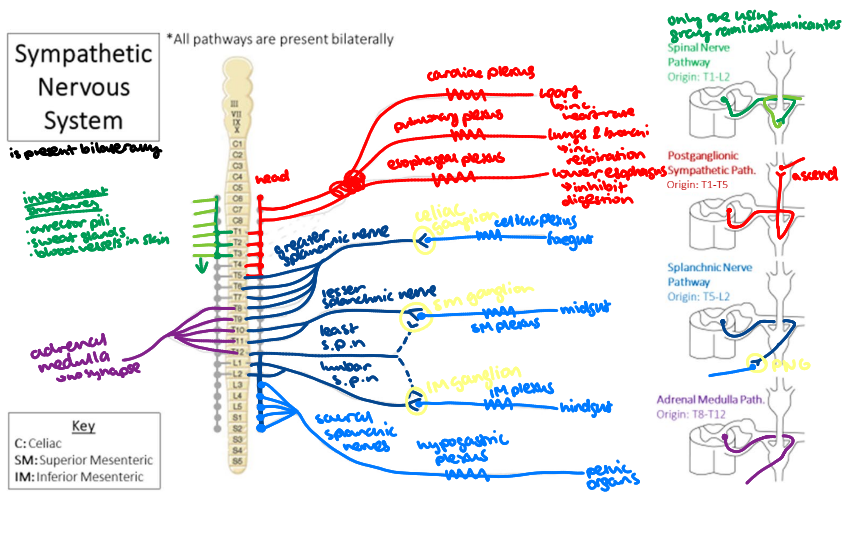
What are the plexuses of the Splanchnic nerve pathway of the SD and where do they travel to?
The greater splanchnic nerve (T5-T9) travels to the celiac ganglion. Postganglionic fibers join the celiac plexus and travel to organs of the foregut
The lesser splanchnic nerve (T10-T11) travels to the superior mesenteric ganglion. Postganglionic fibers join the superior mesenteric plexus and travel to the midgut organs
The least splanchnic nerve (T12) sends fibers either to the superior mesenteric ganglion or the inferior mesenteric ganglion.
The lumbar splanchnic nerves (L1-L2) travel to the inferior mesenteric ganglion. Postganglionic fibers join the inferior mesenteric plexus and travel to the hindgut organs
Sacral splanchnic nerves emerge from the sacral extension of the sympathetic chain. They join the hypogastric plexus to innervate pelvic organs.
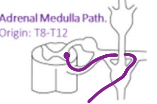
How does the adrenal medulla pathway differ from the other pathways of the SD?
Only pathway that does not have a ganglion.
Instead the axons that originate in the spinal cord travel to the adrenal medulla, the interior portion of the adrenal gland.
The adrenal medulla releases the hormone norepinephrine into the bloodstream, using the blood rather than the postganglionic neurons to communicate with target structures.
What is the function of the adrenal medulla?
It is a neuroendocrine tissue that secretes epinephrine and norepinephrine in response to sympathetic stimulation.
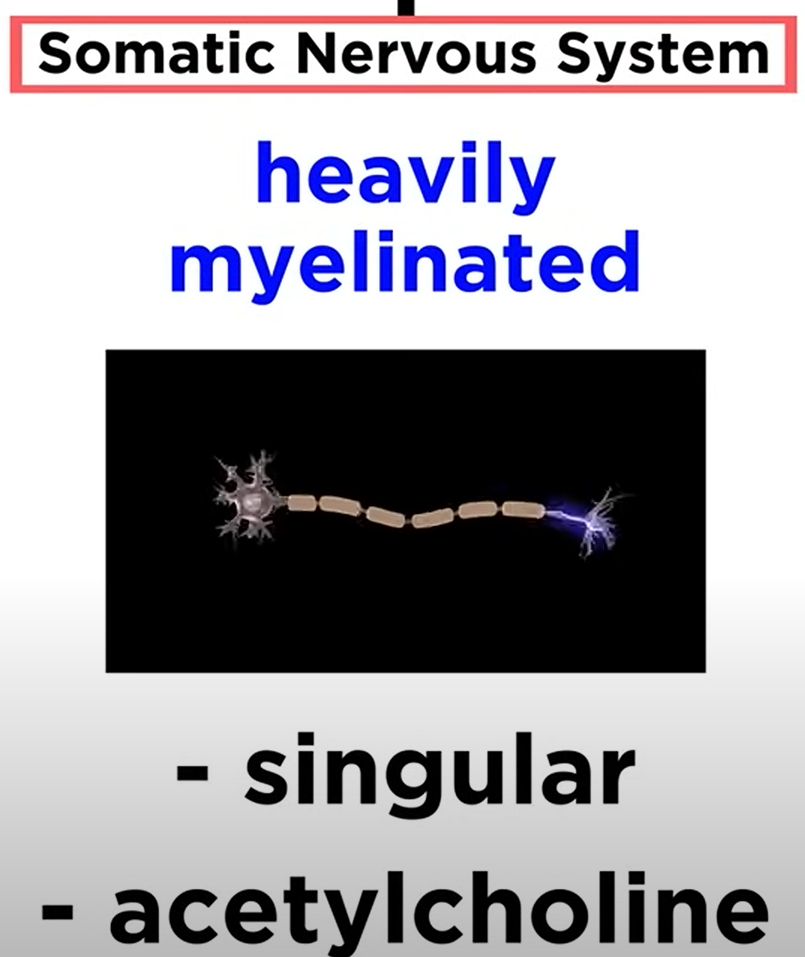
Axons of the SNS are _____ and release the hormones ______
Heavily myelinated
Singular
Release acetylcholine
